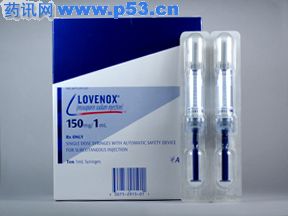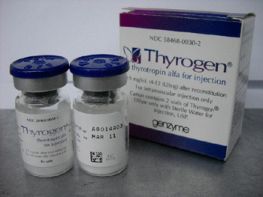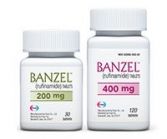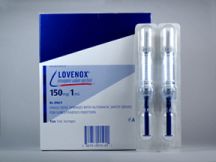LOVENOX®, like all medications, may have side effects. The most common include mild reactions or irritation, pain, bruising, and redness of the skin where you have the injection. IT IS IMPORTANT TO NOTIFY YOUR HEALTHCARE PROFESSIONAL IF YOU NOTICE ANY OF THE FOLLOWING:
Be proactive about your own healthSanofi-aventis, makers of LOVENOX®, cares about patient safety. We believe that the best defense against DVT blood clots is to stay informed and take a proactive role in managing your own healthcare. Have an ongoing dialogue with your hospital-based doctors and nurse specialists about any possible side effects. LOVENOX® can help reduce the risk of developing DVT blood clots, which may lead to PE, in patients undergoing abdominal surgery, hip- or knee-replacement surgery, or in acutely ill medical patients with severely restricted mobility. INDICATIONS LOVENOX® is indicated for the prophylaxis of deep vein thrombosis, which may lead to pulmonary embolism:
LOVENOX® injection is indicated for:
Important Safety Information
Certain procedures, called "epidural/spinal anesthesia" and "spinal puncture," may be used as a normal part of hospitalization. Patients requiring these procedures while being treated with LOVENOX® or other low-molecular-weight heparins are at risk of developing a blood clot in or around the spine. This condition may result in long-term or permanent paralysis. LOVENOX® is not the same as "unfractionated heparin" or other drugs called "low-molecular-weight heparins." Therefore, these drugs cannot be used interchangeably with LOVENOX®. LOVENOX® can alter the blood’s ability to clot. Patients treated with LOVENOX®, who also have conditions affecting the clotting system, must be carefully monitored by their physician. Adjusting the dose of LOVENOX® may be necessary for patients who have certain forms of kidney disease. All patients receiving LOVENOX®, as well as other anticoagulants, should be carefully monitored for bleeding by their physician. Bleeding can occur at any site with LOVENOX® use. Platelet drops, known as "thrombocytopenia," can occur with LOVENOX® use. Cases of a related condition called "heparin-induced thrombocytopenia" have been observed in clinical practice. If you have had this condition, you must notify your healthcare professional. Your physician may perform blood tests to monitor for the occurrence of any drop in platelet count. The use of LOVENOX® has not been adequately studied in pregnant women with artificial (mechanical) heart valves. LOVENOX® should not be used in patients with an allergy or sensitivity reaction to the active ingredient called enoxaparin sodium, heparin, or pork products, and in patients with active major bleeding. Common side effects include mild local reactions or irritation at the site of injection, pain, bruising, and redness of skin. For specific questions about your health, you should always consult your physician or a qualified healthcare professional who is responsible for your care. Lovenox®与未分级肝素的安全有效性研究将在接受正规血管再通治疗的心脏病发作患者中展开 |
Lovenox®
责任编辑:admin |
最新图片
推荐图片更多
热点图片更多 |






![驱虫斑鸠菊注射液[与维阿敏白灵组合治疗]](/uploadfile/picture/uploadfile/200710/20071014112428638.gif)
![维阿敏白灵[维药口服经典方]](/uploadfile/picture/uploadfile/200710/20071014112154962.gif)
